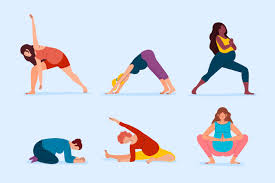Introduction
Exercise during pregnancy has long been a topic of concern and curiosity for expectant mothers. The good news is that for most women, physical activity is not only safe but highly beneficial during pregnancy. Regular exercise can improve mood, reduce pregnancy discomforts, boost energy, promote healthy weight gain, and prepare the body for labor and delivery. However, pregnancy also brings unique changes and risks that require tailored exercise plans and precautions. This article explores safe pregnancy workouts, warning signs to watch for, and guidelines by trimester to help you stay active and healthy throughout your pregnancy.
Safe Activities
Many forms of exercise can be safely performed during pregnancy, provided they are adapted to your fitness level and pregnancy stage. Some of the safest and most recommended activities include:
- Walking: Low-impact and easy to modify, walking boosts cardiovascular health without stressing joints.
- Swimming and Water Aerobics: The buoyancy of water supports body weight, reducing strain on joints and lowering risk of overheating.
- Prenatal Yoga: Improves flexibility, strength, and relaxation; focuses on breathing and gentle stretches.
- Stationary Cycling: Provides cardiovascular benefits with minimal fall risk.
- Low-Impact Aerobics: Classes designed for pregnant women help maintain fitness safely.
These exercises promote cardiovascular health, muscle tone, and mental well-being while minimizing injury risk. It is important to avoid high-impact sports, contact activities, heavy lifting, or exercises that involve lying flat on your back after the first trimester.
Red Flags
While exercise is beneficial, it is essential to listen to your body and recognize warning signs that indicate you should stop and consult your healthcare provider. Stop exercising and seek medical advice if you experience:
- Vaginal bleeding or fluid leakage
- Severe abdominal pain or cramping
- Dizziness, faintness, or chest pain
- Shortness of breath before starting exercise
- Headache, muscle weakness, or calf pain/swelling
- Regular, painful contractions or decreased fetal movement
These symptoms could indicate complications such as preterm labor, placental issues, or dehydration, requiring prompt medical evaluation.
Trimester-Based Guide
Exercise needs and limitations change as pregnancy progresses:
- First Trimester: Fatigue and nausea may limit activity, but light to moderate exercise is encouraged. Avoid overheating and stay hydrated. Focus on low-impact activities like walking and gentle yoga.
- Second Trimester: Energy levels often improve; this is an ideal time to increase moderate-intensity workouts. Avoid exercises involving lying flat on your back to prevent reduced blood flow. Strength training with light weights can be introduced.
- Third Trimester: Balance and joint stability decline due to hormonal changes, so modify activities to reduce fall risk. Continue low-impact exercises and focus on pelvic floor strengthening and stretching. Rest more frequently and avoid overexertion.
Throughout pregnancy, maintain open communication with your healthcare provider and adjust your routine as needed.
Conclusion
Exercise during pregnancy is generally safe and beneficial when done thoughtfully and with appropriate modifications. Choosing safe activities like walking, swimming, and prenatal yoga can support physical and mental health, ease pregnancy discomfort, and prepare your body for childbirth. Awareness of red flags and trimester-specific changes ensures that exercise remains a positive part of your pregnancy journey. Always consult your healthcare provider before starting or continuing any exercise program during pregnancy to tailor recommendations to your unique needs. Staying active and attentive to your body promotes a healthier pregnancy for both you and your baby.
FAQs:
What workouts are safe?
Walking, swimming, prenatal yoga, stationary cycling, and low-impact aerobics are safe.
Can I lift weights?
Yes, but use light weights and avoid heavy lifting or straining.
When should I stop?
Stop if you experience bleeding, pain, dizziness, shortness of breath, or contractions.
Is walking enough?
Yes, walking is an excellent and safe exercise during pregnancy.
Does exercise help with labor?
Yes, regular exercise can improve endurance and may lead to easier labor and recovery.






